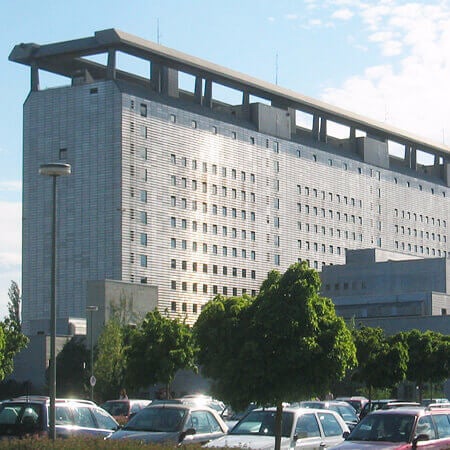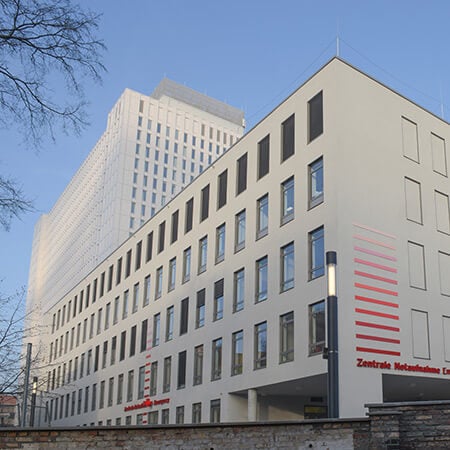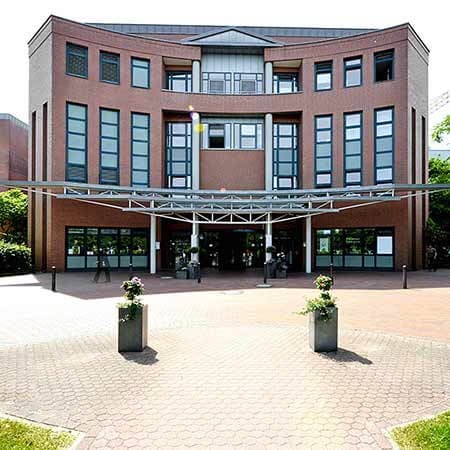Obesity
Obesity is a disease that manifests by the accumulation of an excessive amount of subcutaneous and visceral fat in the human body. Prevalence of obesity is the highest in developed countries, sometimes it exceeds 30%.
The Booking Health portal presents 55 German clinics specializing in obesity treatment
Show all clinics
Obesity – Diagnostics
Obesity is easily detected by visual examination. The fat is accumulated in different parts of the human body. The most common places are the belly, thighs, buttocks, chest and face. Then the fat is accumulated on the limbs.
Diagnostics of obesity is based on body mass index (BMI) calculation.
BMI = body mass (kg)/height2 (m)
Interpretation of the results:
- BMI from 30 to 35 kg/m2 – the 1st stage of obesity
- From 35 to 40 kg/m2 – the 2nd stage
- Over 40 kg/m2 – the 3rd stage
Abdominal obesity poses a great risk to the person’s health. It is usually diagnosed by measuring waist circumference. The ratio of the waist circumference to hip circumference (WC/HC) is also calculated.
The criteria for a diagnosis of men:
- Waist circumference more than 94 cm
- WC/HC more than 1.0
The criteria for a diagnosis of women:
- Waist circumference more than 80 cm
- WC/HC more than 0.85
For more accurate diagnostics, the percentage of fat-free body weight is determined. This test can be be performed only in well-equipped specialized clinics, because it requires special equipment.
Best clinics for the obesity diagnostics:
Show all diagnostic programs
Obesity – Treatment
Obesity treatment is chosen individually, as the treatment program depends on a number of factors. Treatment can be conservative or surgical. Surgeries are performed with cosmetic or medical purpose.
During the first two stages of obesity, conservative treatment can be performed. The third stage requires bariatric surgeries. Some clinical cases require surgical treatment of obesity on the stage 2.
Conservative treatment methods include the following aspects:
Diet. The amount of fat and simple carbohydrates in the diet is significantly reduced. The purpose of this therapeutic measure is to reduce the calorie intake and to change the energy balance.
Physical exercises. The purpose is the same. The additional energy consumption contributes to the changing of the energy balance.
Behavioural therapy. This is a complex of psychotherapeutic measures aimed at correction of human eating behavior. It is the most important stage of treatment which reduces the possibility of the obesity relapse after the body mass normalization.
Drugs therapy. Drugs perform an auxiliary function. Most often, medicines with one of three following action mechanisms are prescribed:
- Anorexigenic drugs, which reduce hunger. These drugs complement the effect of a diet, greatly improving its result.
- Stimulants, which accelerate metabolic processes and complement the effect of physical exercises by increasing energy expenditure at rest.
- Calorie blockers, which disrupt the process of food absorption by blocking enzymes that break down carbohydrates or fats in the gastrointestinal tract.
Other medications are used if necessary, depending on a specific clinical situation. For example, if a person suffers from hypothyroidism (low thyroid hormone level), the thyroxine replacement therapy is prescribed. If hyperphagia takes place in a stressful situation ("emotional eating") then psychotropic drugs are recommended.
Surgical treatment:
Plastic surgeries are pointed at improving a person's appearance, but they don’t improve the long-term prognosis of obesity. The abdomen is the most frequent area of surgical interventions performing.
It includes the following operations:
- Subcutaneous liposuction
- Laser liposuction
- Abdominoplasty with the abdominal skin tightening
Patient looks much better after the surgery as his body mass decreases slightly. Nonetheless, the amount of visceral fat (which surrounds the internal organs) remains at the same stage, so plastic surgery can be performed only for cosmetic and not for the medical reasons.
Bariatric surgeries aim to:
- Dissociate the food lump and digestive enzymes. As a result, pancreatic juice is no longer mixed with the food in the intestines. As a consequence, the digestion is disturbed. A person can eat all he wants, but still continues to lose weight.
- Reduce the volume of the stomach. As a result of the operation, the stomach becomes too small, and the person is no longer able to eat large amounts of food simultaneously. Due to early satiety the intake of calories is considerably reduced, so the patient loses weight.
Both surgeries are performed for medical reasons at the third stage of obesity or at second stage of obesity with an unfavourable prognosis (abdominal obesity, concomitant somatic pathology, the ineffectiveness of conservative methods of treatme
Best clinics for the obesity treatment in Germany:


Obesity – Rehabilitation
After the active treatment phase, the patient necessarily goes through the supportive rehabilitation program. In case of obesity the rehabilitation helps to:
- Save treatment results and continue the safe weight loss
- Normalize carbohydrate, fat and protein metabolism in the body
- Improve the condition of the joints and cardiovascular system
- Improve mental and physical working capacity
- Return to active daily life
In Germany patients undergo comprehensive rehabilitation programs, which include the following methods:
- Dietotherapy. The nutritionist selects a balanced diet for the patient, taking into account the rhythm of life, the level of physical activity and individual wishes.
- Physical activity. The coach prepares an individual mode of trainings. Depending on the patient's personal purposes, it includes the daily physical activity of varying intensity and 2-4 more active workouts in the gym, under the control of a specialist, per week.
- Physiotherapy. Depending on the patient's needs, various types of massage, radon and carbon dioxide baths, magnetotherapy and laser treatment are used.
- Drug therapy. Medicines help to reduce an appetite and activate metabolic processes. If necessary, the doctor complements the rehabilitation program with medications for the treatment of concomitant diseases. The electrophoresis with drugs is used, as well.
- Psychological support. The patient works with a psychologist individually or in a group. Discussing the problem with a specialist and other patients helps to overcome the path to recovery successfully.
Rehabilitation programs in Germany show one of the best results in the world. Most patients successfully restore their health here.
Best clinics for general therapeutic rehabilitation in Germany:
Author:
The article was edited by medical expert, board certified Dr. Nadezhda Ivanisova. For the treatment of the conditions referred to in the article you must consult a doctor; the information in the article is not intended for self-medication!
Sources:
Centers for Disease Control and Prevention
The cost of services includes
Here you can find the cost of treatment for this disease at the German University Hospitals. Leave a request and we will provide a free consultation with a doctor and will start organizing the whole treatment process.
The program includes the following:
- Issuing of an invitation for getting a visa for treatment as quick as possible
- Fixing an appointment at a time convenient for you
- Preliminary organization of a comprehensive examination and discussion of the forthcoming treatment plan
- Arranging transfer from the airport to the hospital and back to the airport
- Provision of interpreting services and services of a personal medical coordinator
- If necessary, assistance in the organization of further surgical treatment
- Provision of a medical insurance against treatment complications covering up to 200,000 euro
- Preparation and translation of medical records and recommendations from the hospital
- Assistance in the subsequent communication with your attending physician, including consultations on repeated X-ray images through the unique medical document management system E-doc




